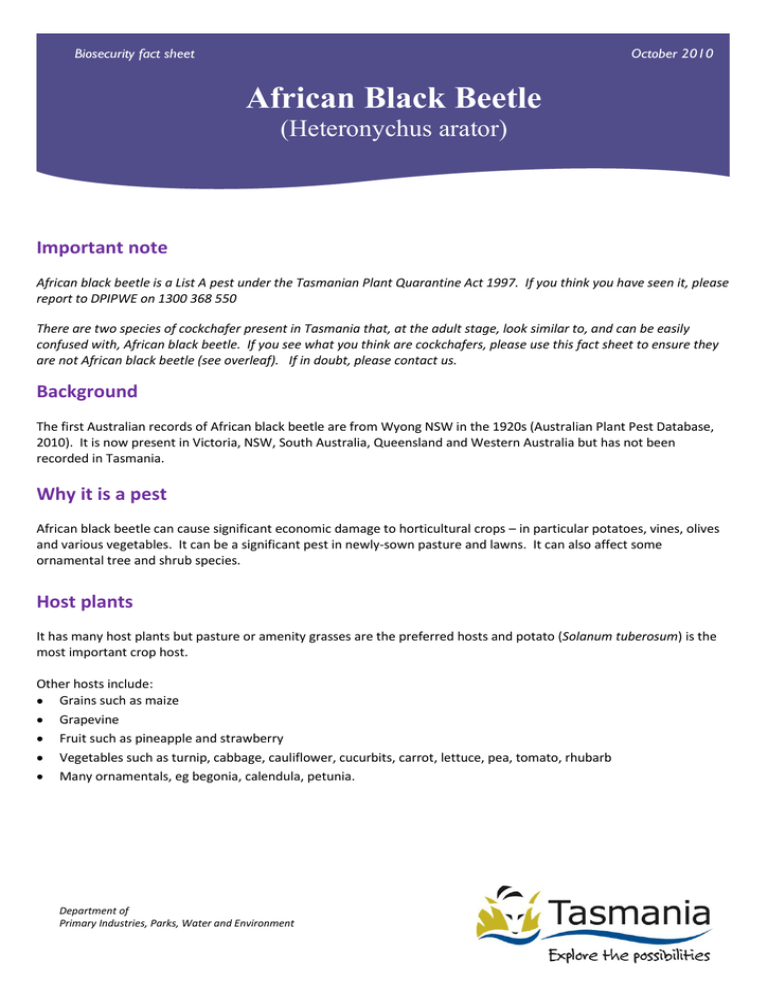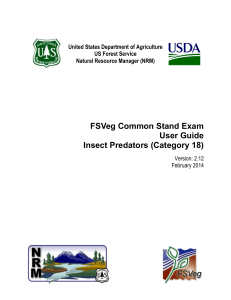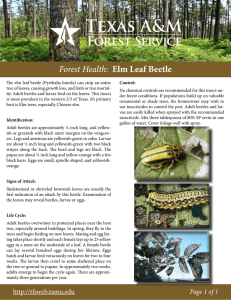African Black Beetle - Department of Primary Industries, Parks
advertisement

Biosecurity fact sheet October 2010 African Black Beetle (Heteronychus arator) Important note African black beetle is a List A pest under the Tasmanian Plant Quarantine Act 1997. If you think you have seen it, please report to DPIPWE on 1300 368 550 There are two species of cockchafer present in Tasmania that, at the adult stage, look similar to, and can be easily confused with, African black beetle. If you see what you think are cockchafers, please use this fact sheet to ensure they are not African black beetle (see overleaf). If in doubt, please contact us. Background The first Australian records of African black beetle are from Wyong NSW in the 1920s (Australian Plant Pest Database, 2010). It is now present in Victoria, NSW, South Australia, Queensland and Western Australia but has not been recorded in Tasmania. Why it is a pest African black beetle can cause significant economic damage to horticultural crops – in particular potatoes, vines, olives and various vegetables. It can be a significant pest in newly-sown pasture and lawns. It can also affect some ornamental tree and shrub species. Host plants It has many host plants but pasture or amenity grasses are the preferred hosts and potato (Solanum tuberosum) is the most important crop host. Other hosts include: Grains such as maize Grapevine Fruit such as pineapple and strawberry Vegetables such as turnip, cabbage, cauliflower, cucurbits, carrot, lettuce, pea, tomato, rhubarb Many ornamentals, eg begonia, calendula, petunia. Department of Primary Industries, Parks, Water and Environment DPIPWE biosecurity fact sheet – African black beetle Identification of larvae or grubs C shaped Fully grown larvae or grubs are approximately 25 mm long Feed below soil surface Brown/tan head capsule. African black beetle final instar larvae Picture courtesy of WA Dept of Agriculture Identification of adults Brown/black beetles, approx 14 by 7 mm Similar in appearance to cockchafers (see below) Body shape relatively parallel Weak ridges (striae) on wing covers Fly in late summer and autumn. African black beetle Picture courtesy of PaDIL Comparison with adult Black- and Red-headed pasture cockchafers Picture courtesy of DPI Victoria Red-headed pasture cockchafer Deep ridges on wing covers Oval shape Flies in spring Black-headed pasture cockchafer Deep ridges on wing covers Narrow shape Flies in summer The key distinguishing features are that the African black beetle has parallel sides and has weak ridges on the wing covers. DPIPWE biosecurity fact sheet – African black beetle Lifecycle African black beetle has one generation per year. Eggs Adults: Egg laying occurs from spring until early summer to a depth of about 10mm Eggs hatch within 6 weeks (approximately late spring/summer depending upon soil temperature). Emerge late summer to autumn and then overwinter in free draining soil Feed in spring, mate and lay single eggs in soil at a depth of about 10 mm Usually die by the end of early summer. Asynchrony within a population is common, eg 20% of the overwintering population can be third-instar larvae. Larvae Larvae can burrow to a depth of around 100 mm Three instars, young larvae feed on soil organic matter, while more mature larvae attack plant roots. Pupae The final larval instar burrows to a depth of 100 mm to pupate in late summer. Winter Jun July Aug In Australia, development from egg-laying to adult emergence takes about three months. Temperatures above 15°C are most favourable for development and survival. Spring Sep Oct Nov Summer Dec Jan Feb Autumn Mar Apr May Eggs Larvae Pupae Adults main periods of activity minor and/or sporadic periods of activity Disclaimer: While all care has been taken to ensure that information contained in this fact sheet is true and correct at the time of publication, the Department of Primary Industries, Parks, Water and Environment gives no warranty or assurance, and makes no representation as to the accuracy of any information or advice contained in this publication, or that it is suitable for your intended use. No business or investment decisions should be made in reliance on this information without obtaining independent/or professional advice in relation to your particular situation.





